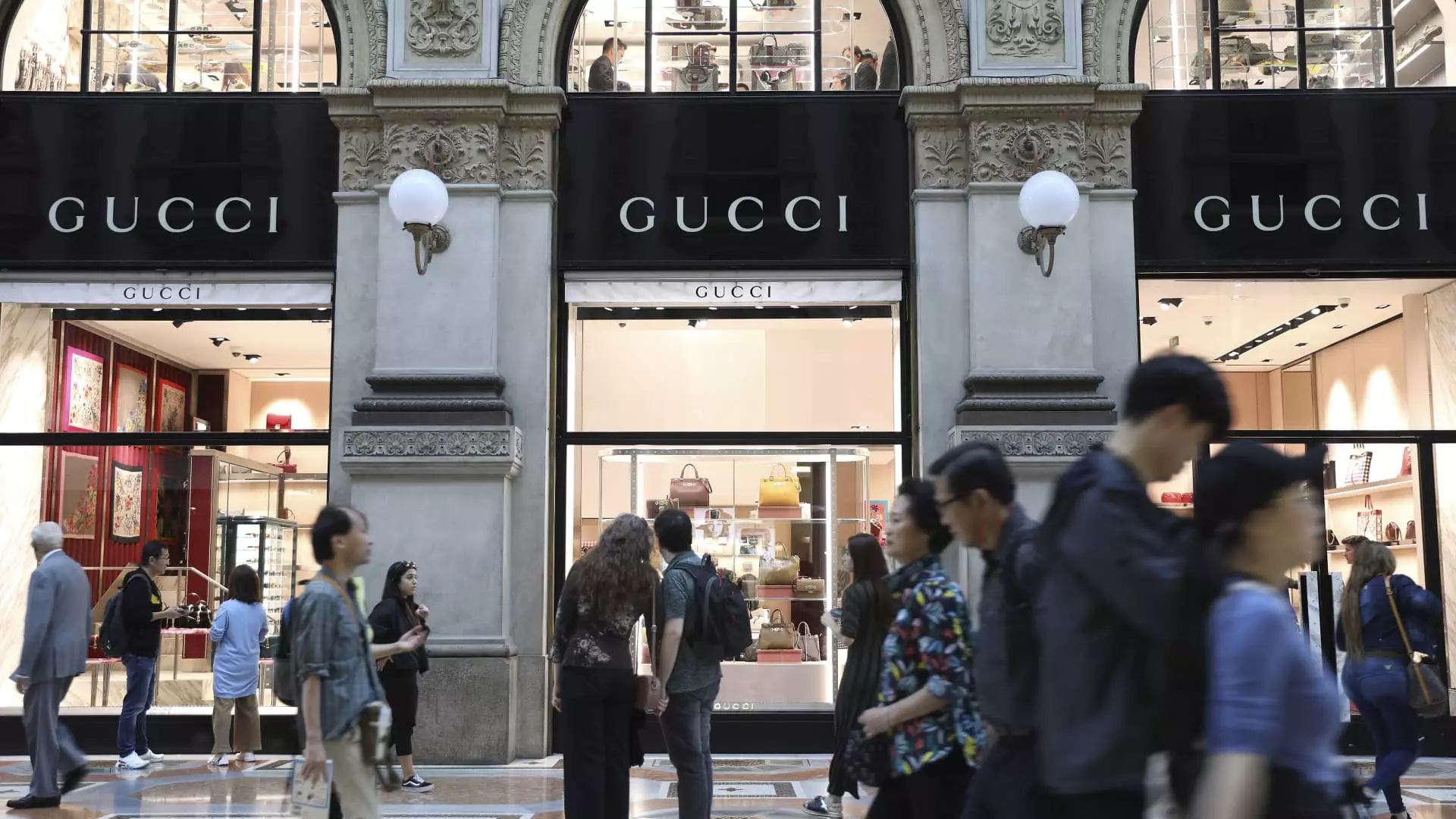The landscape of Europe’s luxury sector has experienced significant upheaval, yet recent reports suggest a cautious return to optimism. The latest earnings season has revealed better-than-anticipated results for several high-end brands, indicating a potential path toward recovery from a tumultuous 2024. Analysts, including Simone Ragazzi of Algebris Investments, have signaled that while the previous year may have constituted one of the darkest periods for this industry, normalization and revival seem possible as we progress into 2025. This shift in sentiment is particularly noteworthy given the challenges posed by faltering demand in China and looming U.S. tariffs that threaten the sector’s stability.
Brands like Hermes have notably reported exceptional performance, showcasing remarkable quarterly sales that have exceeded expectations. As a highly sought-after name, Hermes continues to dominate the luxury market, embodying resilience amidst broader challenges. Fashion houses such as LVMH and Kering have also managed to surpass forecasted targets, adding a layer of credibility to the optimistic projections for recovery within the luxury segment. Analysts from agencies like Bernstein suggest that the worst may indeed be behind us, with recovery driven primarily by resilient consumer behavior in the U.S. and Europe.
However, this resurgence is by no means free of complications. The specter of China’s declining luxury market looms large, as brands such as Gucci and L’Oreal report disappointing sales in what has long been regarded as a critical market for luxury goods.
The specter of U.S. tariffs under President Donald Trump is another key factor that could affect luxury brands operating in Europe, leading to potential price hikes as companies may need to pass additional costs onto consumers. Analysts from UBS have highlighted that while some firms can justify price increases due to brand positioning, many may struggle to maintain consumer loyalty in an environment where financial prudence becomes more critical. The sentiment among consumers is evolving; as disposable income shrinks, luxury consumers are prioritizing quality over quantity to justify their purchasing decisions—a stark contrast to previous years.
The nuances of the European luxury market present a unique challenge, as many brands cannot simply shift production overseas without losing their inherent value proposition that comes with a “Made in Italy” or “Made in France” label. Such a situation complicates the narrative around U.S. tariffs and raises concerns about how trade policies will affect consumer sentiment across key markets.
As we continue to analyze the pulse of the luxury market, it becomes evident that consumer behavior skewed towards premium craftsmanship and extensive brand heritage is dictating the future. Research from Barclays has pointed out that a number of high-end brands are facing scrutiny due to stagnant innovation and elevated pricing structures. This, combined with broader economic uncertainty, is leading consumers to be more selective in their purchases, favoring brands that resonate with their values of sustainability and authenticity.
With this paradigm shift in buying behavior, luxury firms are increasingly aware of the need to innovate and connect deeply with consumers. They recognize that the battle for market share will not only revolve around lavish marketing strategies but rather on delivering genuine value and quality that transcends fleeting trends.
Looking ahead, analysts assert that the luxury market’s leading brands, particularly those that cater to the affluent consumer base, are poised to thrive. Companies with strong reputations and unwavering commitments to quality—like Hermes and Richemont—are likely to lead the charge in overcoming the idiosyncratic challenges that the sector faces.
However, questions linger over the evolving definition of luxury. As consumer values shift, there is an urgent need for brands to redefine what luxury means in the modern context. It is clear that the focus will need to pivot from merely extravagant pricing to a genuine connection with customers who seek not just products, but stories that align with their ideals.
Europe’s luxury sector finds itself at a crossroads, with opportunities for growth emerging despite considerable challenges. While the path ahead may not be devoid of hurdles—be it tariff-related complications or the weakening Chinese economy—the industry’s adaptive capacity may well determine its ability to rebound and redefine the essence of luxury in an evolving global landscape.

